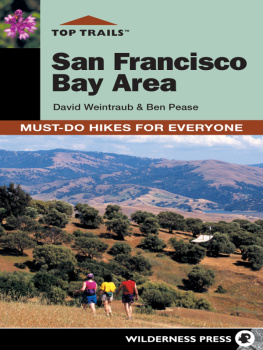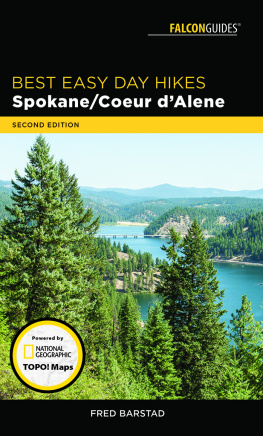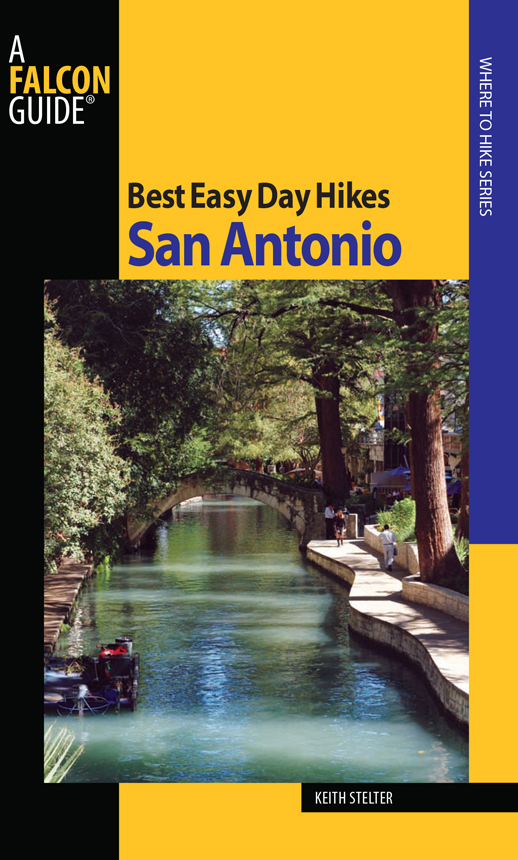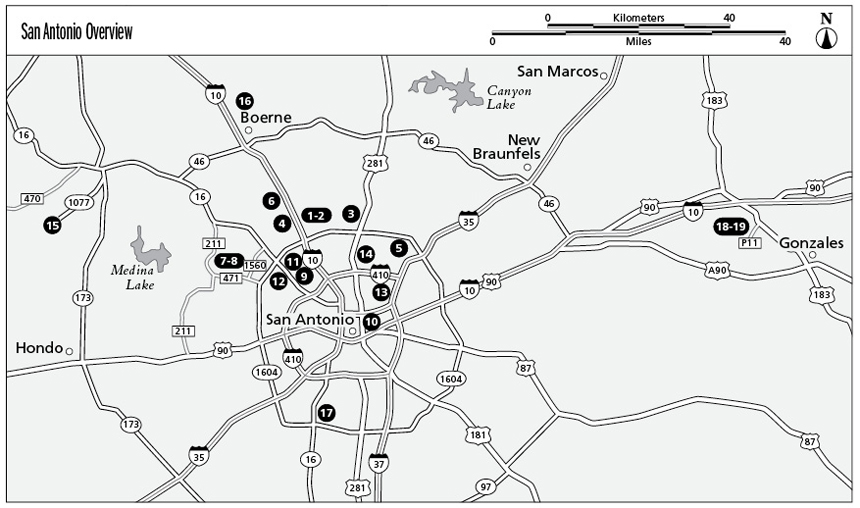Best Easy Day Hikes Series
Best Easy Day Hikes San Antonio
Keith Stelter
Copyright 2009 by Morris Book Publishing, LLC
ALL RIGHTS RESERVED. No part of this book may be reproduced or transmitted in any form by any means, electronic or mechanical, including photocopying and recording, or by any information storage and retrieval system, except as may be expressly permitted in writing from the publisher. Requests for permission should be addressed to Globe Pequot Press, Attn: Rights and Permissions Department, P.O. Box 480, Guilford, CT 06437.
Falcon, FalconGuides, and Outfit Your Mind are registered trademarks of Morris Book Publishing, LLC.
Project editor: Jessica Haberman
Layout: Kevin Mak
Maps: Off Route Inc. Morris Book Publishing, LLC
TOPO! Explorer software and SuperQuad source maps courtesy of National Geographic Maps. For information about TOPO! Explorer, TOPO!, and Nat Geo Maps products, go to www.topo.com or www.natgeomaps.com.
Library of Congress Cataloging-in-Publication Data is available on file.
ISBN 978-1-4930-0550-5
The author and Globe Pequot Press assume no liability for accidents happening to, or injuries sustained by, readers who engage in the activities described in this book.
Contents
The Hikes
Acknowledgments
Many people helped make this book possible, and a few went beyond the call of duty. Thanks to Mark, Scott, and Kay Stelter for their encouragement, ideas, and proofreading. Nicole and Jessica Stelter helped with filing and sorting papers. Karen Vasquez and Rick and Samantha Finch went hiking with me.
Thanks also to Chris Holmes, Texas Parks & Wildlife Department (TPWD) regional interpretive specialist, State Parks Region V, for working with me on new trails and the development of Texas Parks & Wildlife trail maps. There were many other folks at TPWD who were very helpful. Thanks to Dianne Hart, GIS specialist for San Antonio Natural Areas, who helped with making trail maps.
There were dozens of other people who helped with information about history, geology, flora and fauna, and hikes they considered the best. I appreciate their work and thank all of them.
Introduction
The purpose of this book is to offer more than the typical hiking guide, in which most trail descriptions are generally point-to-point guides, getting you from the trailhead to the trails end. This book provides details about flora, fauna, history, and geology to appeal to a broad spectrum of hikers, including families with young children. I spent nine months researching, talking with rangers and other folks, hiking, and sometimes rehiking a trail, studying the area and looking for interesting facts, scenery, history, geology, and topography. I talked with a variety of hikers, asking them what they wanted a hike to cover and what made a best hike. I had the best overall hiking region in Texas to choose fromcentral Texas, which includes the Edwards Plateau and the Hill Country.
I used the following criteria to come up with the best hikes included in this guide: accessibility, fun, exercise, family experience, scenery, history, rivers and lakes, experience of the hiker, moderate length (approximately 2 to 4 miles), dog friendliness, and wheelchair accessibility. Loops and preferably interconnecting loop trails were selected where possible, so a best hike within a park could be fashioned by combining the best of several trails.
Determining the best hikes in the area was a combination of personal judgment about who the hike would appeal to and information from park staff and other hikers. Four of my favorite hikes are in the following parks: Friedrich Wilderness Park, Palmetto State Park, Comanche Lookout, and Government Canyon State Natural Area.
Trails are no longer the exclusive domain of the solitude-loving wilderness seeker or the dedicated fitness enthusiast. Whether providing recreational and educational opportunities, encouraging well-being, exploring history and geology, or bringing together people of all ages, hiking has become an important factor in many peoples lives. I hope that at least some of these hikes will become your best hikes and that the book will be informative and interesting reading, as well as an excellent guide.
San Antonio Weather
The San Antonio climate is subtropical, with an average low temperature in January of 39F and an average high in July and August of 95F. The average yearly rainfall is 30 inches. The wettest month is May, averaging 4.2 inches. The driest month is March with 1.6 inches of rain, followed closely by January and December with 1.7 inches. The city generally has mild temperatures with 300 days of sunshine a year.
State Parks Pass
For the best deal around, take advantage of the Texas State Parks Pass instead of paying on a per-person/per-visit basis. The pass provides entry to all ninety-three state parks for the member and all occupants of his or her vehicle. Its good for one year from time of purchase. Purchase at the park or order by phone: (512) 389-8900.
Flora and Fauna
The hiking trails around San Antonio, including portions of the Texas Hill Country, have a biodiversity hard to equal. The merging of four major ecoregionsthe post oak savanna, the blackland prairie, the south Texas plains, and the Edwards Plateauis part of the reason. Another is that the Central Flyway, one of four major bird migration routes in the United States, goes directly over the area. More than 400 of the 600 bird species recorded in the state have been seen in this region. The golden-cheeked warbler and black-capped vireo, both endangered species, are native to Texas. The golden-cheeked warbler nests only in central Texas. Several of the hikes, particularly at Balcones Canyonlands National Wildlife Refuge, offer good viewing.
The best indication of birds being present is hearing their songs. The Carolina chickadee sings chickadee-dee-dee-dee, the killdeer kildee, kildee, kildee, and woodpeckers rat-atap-rat. The northern mockingbird, the Texas state bird, can be heard mimicking the calls of other birds. Texans claim the mockingbird has the prettiest song of any bird. Some of the most colorful birds include the black-crested titmouse, ladder-backed woodpecker, painted bunting, roadrunner, northern cardinal, eastern bluebird, red-shouldered hawk, great blue heron, and numerous ducks. Millions of Mexican free-tailed bats, the state flying mammal, arrive in central Texas each spring to roost in caves in the Balcones Escarpment and the Edwards Plateau.
Most mammals are active during the night, so seeing them can be difficult. Look for their tracks around the trail and near streams or lakes. White-tailed deer, nine-banded armadillos (the state small mammal), coyote, bobcat, beaver, opossum, ring-tailed cat, badger, fox, raccoon, skunk, wild hogs, javelina, fox squirrels, and Rio Grande wild turkeys make their homes here. White-tailed deer are abundant in many of the hiking areas.
Some trees and plants native to east Texas seem to be constantly meeting those of west Texas in transitional zones or isolated pockets. The dwarf palmettos in Palmetto State Park are an example. Rivers and creeks are lined with bald cypress, black willow, hackberry, sycamore, cottonwood, and pecan. Bald cypress trees add a majestic dimension to waterways, towering up to 120 feet with their cone-shaped knees projecting up through the water. Pecan trees, the state tree, also like river shores.








